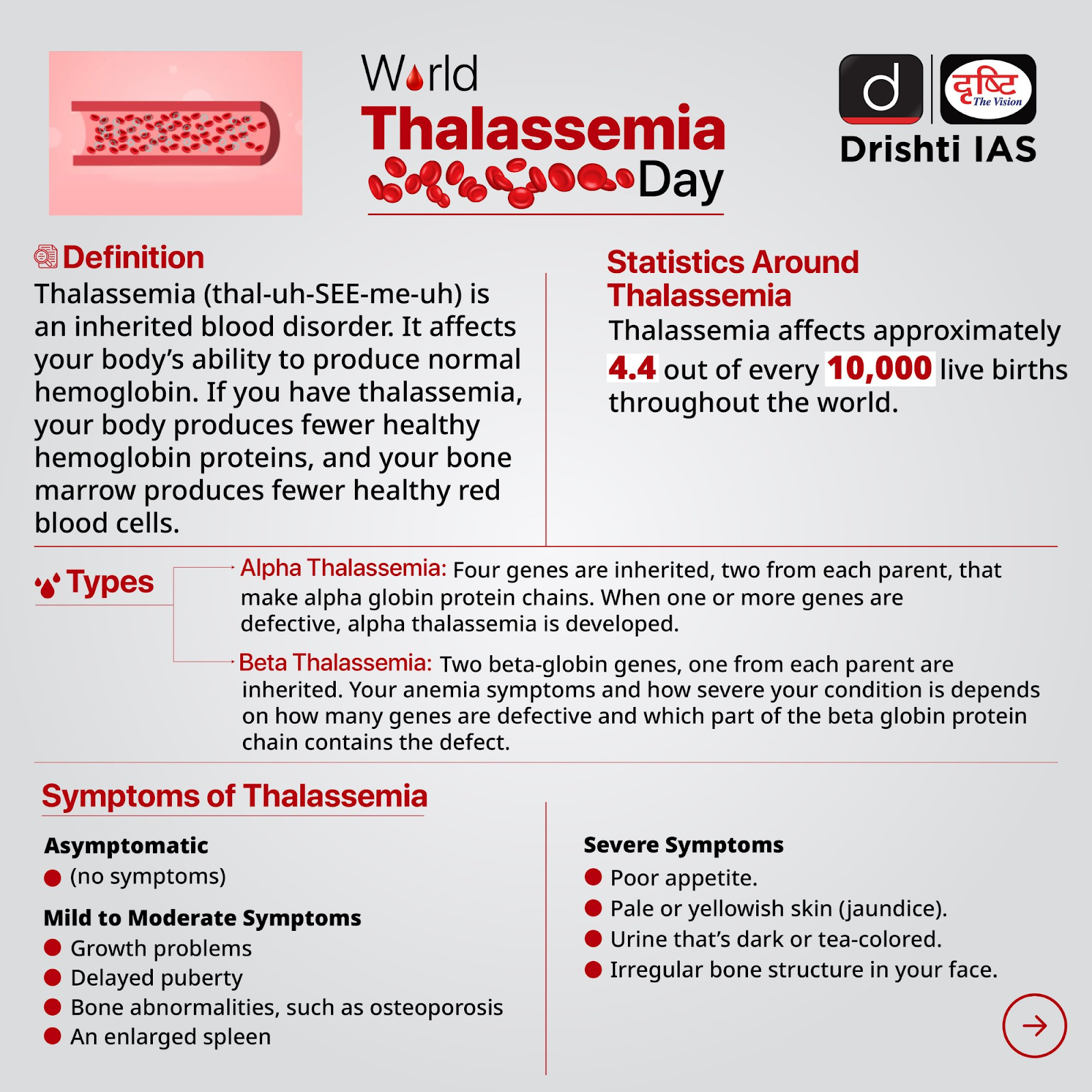Thalassemia Burden in West Bengal | 13 May 2025
Why in News?
On World Thalassemia Day, West Bengal experts expressed concern over the State’s high Thalassemia prevalence, which exceeds the national average.
Key Points
- World Thalassemia Day:
- It is observed every year on 8th May as a global effort for prevention, awareness and early diagnosis for inherited blood disorder disease Thalassemia.
- The theme for 2025 is "Together for Thalassemia: Uniting Communities, Prioritizing Patients".
- National Burden and High-Risk Communities:
- According to the 2016 National Health Mission report, 10,000 to 15,000 babies with Thalassemia Major are born annually in India.
- Communities with higher carrier rates include Bengalis, Sindhis, Punjabis, and Gujaratis.
- Alarming Prevalence in West Bengal:
- According to the West Bengal Health Department, 6% to 10% of the State’s population carries the disease, compared to the national average of 3% to 4% (2011 Census data).
- West Bengal’s Thalassemia burden is worsened by:
- Low public awareness
- Intra-community marriages
- Insufficient early screening
- The State has over 18,000 transfusion-dependent patients and a 2.5% patient positivity rate, as per the State Health Department.
- State Efforts:
- West Bengal has established 36 Thalassemia Control Units (TCUs) across districts.
- These TCUs focus on first-trimester pregnancy screening and screening among adolescents to prevent future transmission.
- Legal and Social Challenges:
- There is no national law preventing marriages between Thalassemia carriers.
- Health officials identify intra-community marriages as a key social challenge and emphasize early screening and awareness to prevent Thalassemia in children.
- The Importance of Parental Screening:
- Experts recommend pre-marital or pre-conception screening for both partners to prevent the condition.
- Without regular care and transfusions, life expectancy may not exceed 30 years for Thalassemia patients.
- Early detection, informed parenting, and ongoing care can significantly improve quality of life and outcomes.

.jpg)
